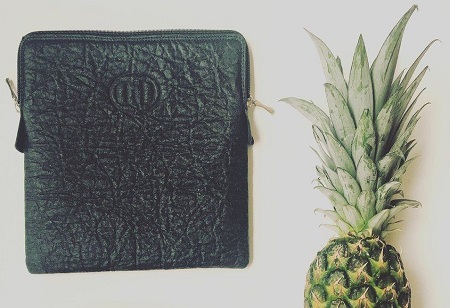According to a recent report, the global
bio-based leather market is anticipated to reach USD 868 million by 2026. Factors bolstering the market growth include the surge in the trend for cruelty-free &
sustainable leathers.
The traditional methods of tanning & pre-tanning produce a huge number of effluents that account for nearly 90 percent of the total pollution from a tannery. These effluents have a huge number of pollutants in them which include sulfides, salt, lime sludge, etc. Apart from these, raising animals whose skin turns into leather later needs vast quantities of water as well as pastureland. While arsenic that is used in the tanning process is associated with lung cancer, studies about leather-tannery workers in Sweden as well as Italy found cancer risks.
Another major disadvantage of using leather is real leather possess almost 3X the negative environmental impact similar to its synthetic counterparts. Since Polyurethane & PVC - some of the important raw materials that are added in the manufacturing of synthetic leather, possess harmful effects on humans as well as the surrounding environment. Hence, bio-based are preferred more than normal leather products today. Polyurethane & PVC are isocyanates, which pose harm to the lungs and ultimately lead to asthma attacks & lung irritation.
This is why bio-based products are preferred over usual leather products as the manufacturing process of bio-based leather has no harmful traits when compared to real leather. The manufacturers of bio-based leather are focusing majorly on producing products using natural fibers that include flax or fibers of cotton mixed with palm soybean corn & other plants.
Innovations in bio-based leather products
Pineapple leaves which are considered a waste product are utilized in upscaling into something of value without using many resources. It is used in the manufacturing of shoes, handbags, and other accessories. There are a lot of accessories manufactured using pineapple fibers that have already hit the marketplace. Likewise, several cell-based & byproduct-based sources that can be used in the manufacturing of bio-based leather
that include collagen-based on yeast fermentation, mushrooms, etc. are also used by manufacturers today.
One such company that manufactures vegan leather is Ananas Anam Ltd. The firm is in the process of manufacturing leather-like material using the fibers from pineapple leaves.
Most of the companies are coming up with bio-based leathers that are manufactured using several raw materials that include cork, coconut, fruit-based, hemp, etc. Modern Meadow a manufacturer of biologically advanced materials has come up with sustainable bio-fabricated materials that are inspired by leather.
Sustainable & cruelty-free alternative to leather
The shift of preference by the consumers & fashion brands for a sustainable as well as a cruelty-free alternative to leather has bolstered the bio-based leather market for the footwear sector. Some of the developed economies are making use of mushroom sources for obtaining and manufacturing bio-based leather. Since these mushroom sources are easy to cultivate & harvest most of the bio-based leather manufacturers are claiming to manufacture 100 percent biodegradable products while others are claiming to use a mix of both plant sources as well as polymer resin for manufacturing durable footwear.
A lot of R&D is being conducted in numerous countries for manufacturing products that would be 100 percent biodegradable in the future. Since plant-based leather has 40x less carbon impact than compared to traditional leather most start-ups are now manufacturing shoes out of cork, pineapple & coconut husks.
Another firm – MycoWorks is making use of mushroom mycelium to manufacture leather. After spending 2 decades in research, the company has now come up with an eco-friendly leather alternative, which is not just completely biodegradable but also water-resistant, & strong.
The demand for footwear from both the sports as well as fashion industries is augmenting the bio-based leather market in developing economies. Also, in order to reduce carbon footprints, several major fashion brands are preferring bio-leather over conventional leather in these countries.
The road ahead
Although Bio-based leather specifically plant-based leather is still at an initial stage, it is rapidly augmented by some of the world’s largest global brands and is in the process of establishing themselves as early adopters of these products. Among the various types of bio-based leather raw materials, the most commonly used are Pinatex, mushroom & apple. Since the production scales are concerned very few small-scale manufacturers are producing these products and therefore, these are unavailable in large quantities, globally.
The final area of alternative or bio-based leather innovation is mainly focused on fermentation & cellular engineering, while most of the technologies used in these processes are still in the laboratory/early piloting phase. Besides, these can be applied in varied industries, which include pharmaceutical food & beauty, and therefore a few of the companies are keeping their options open with respect to what types of products their technology will be commercialized in.
